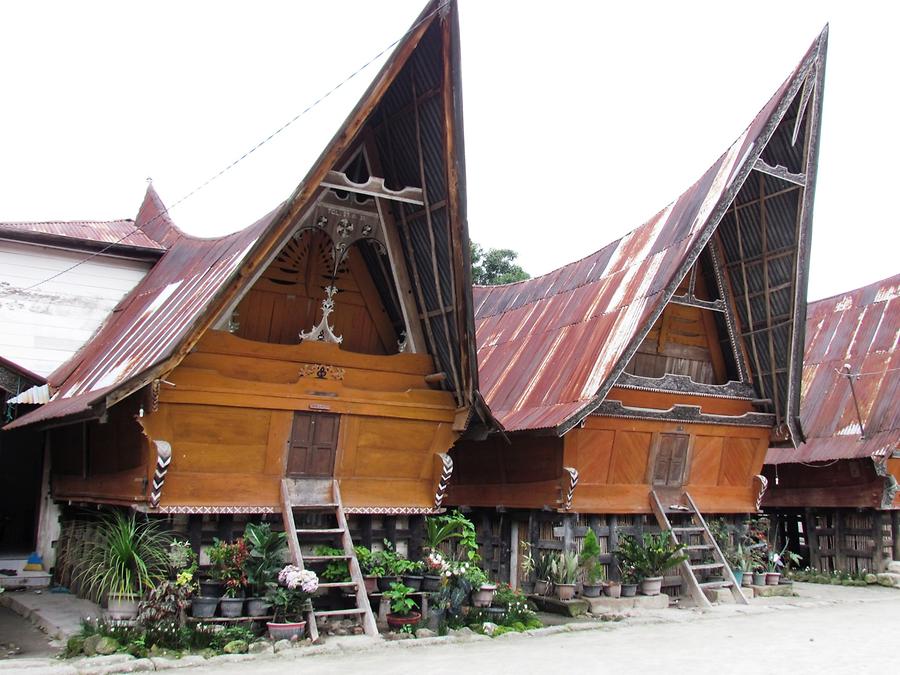Lake Toba - Samosir Island#

The Batak are a group of minorities living in different areas on Sumatra and the Toba Batak are known for their weaving, wood carving and especially ornate stone tombs. While most of the Batak are now Muslim or Christian, elements of their ancient religion still remain among the Karo. Ritual cannibalism was common among pre-colonial Batak people to strengthen the eater's vital energy. Rumors of Batak cannibalism survived into the early 20th century...
Die Batak sind eine Minderheitengruppe in verschiedenen Gebieten Sumatras; die Toba Batak sind bekannt für ihre Weberei, Holzschnitzerei und besonders ihre kunstvollen Steingräber. Während die meisten Batak jetzt muslimisch oder christlich sind, blieben aber auch Elemente ihrer alten Religion immer noch erhalten, v.a. unter den Karo. Ritueller Kannibalismus war bei den vorkolonialen Batak-Stämmen üblich, um die Lebensenergie des Essers zu stärken. Gerüchte von Batak-Kannibalismus überlebten bis in das frühe 20. Jahrhundert ...